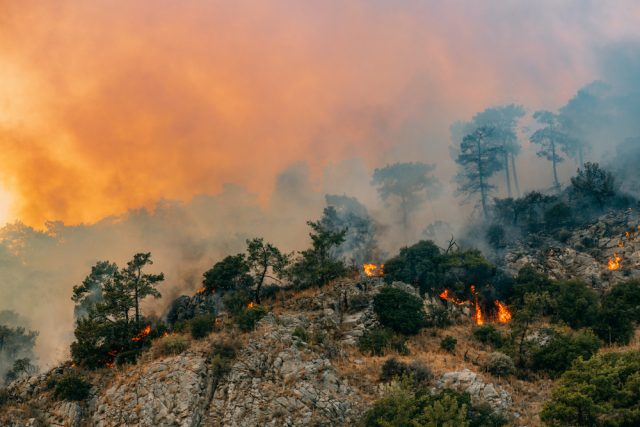This website uses cookies so that we can provide you with the best user experience possible. Cookie information is stored in your browser and performs functions such as recognising you when you return to our website and helping our team to understand which sections of the website you find most interesting and useful.
Fresh scientific study highlights risks to wine growing regions
A new report in a scientific journal has highlighted the continuing impact of climate change on wine growing regions and how warmth will impact traditional vineyard areas by the end of the century.

According to the French scientists, led by Cornelis van Leeuwen and the University of Bordeaux, 90% of traditional wine regions in coastal and lowland regions of Spain, Italy, Greece and southern California “could be at risk of disappearing by the end of the century because of excessive drought and more frequent heatwaves with climate change”.
The study, in Nature Reviews Earth and Environment, reported that “the geography of wine production is changing”, and it considered the consequences of changing temperature, precipitation, humidity, radiation and CO2 on global wine production and explore adaptation strategies.
It highlighted how current wine growing regions were mid-latitude due to the warmth for ripening but without excessive heat, and were relatively dry to avoid strong disease pressure.
But it said that warmer temperatures in more northernly regions, such as Washington State, the southern United Kingdom, and Tasmania, are “driving the emergence of new wine regions”.
Suitability
The scientists said that it was possible for current wine producers to mitigate against the worst impacts of warming, by changing plant material, including varieties and rootstocks, training systems and general vineyard management.
But even taking on such strategies, the adaptations “might not be enough” to maintain economically viable wine production. It called on more research to be done to assess the economic impact of such climate change adaptation at a large scale.
Highlighting the scientists’ own country, it said that “a substantial advance” in harvest dates, and alcohol level, had already been observed in Bordeaux and Alsace, with “the sustainability” of such established wine growing regions “likely to change” in the twenty-first century.
The scientists said: “Pressures from temperature rise and drought could challenge production in already hot and dry regions to the point where suitability will be lost, with enormous negative social and economic consequences. Mid-latitude wine regions could be increasingly exposed to spring frost events, owing to earlier budburst.”
Severe weather
Alongside temperature rises, they also pointed to other severe weather events, such as hailstorm, which can damage crops, although they claimed some of the projections were “overly pessimistic”, because they don’t take account of growers adapting to future conditions.
But it also warned that some wine growing regions were already at “breaking point”, including in Spain and Portugal, where some of the hottest and driest regions had already experienced temperatures that had resulted in stunted vines, defoliated canopies and “severe yield losses”.
Stating there will be “winners and losers”, the authors also said that there were issues with environmental preservation in new wine growing areas, as previously unsuitable regions moved into grape growing, including impacts to previously wild habitats and issues of irrigation.
It said: “The emergence of new pests and diseases and the increasing occurrence of extreme weather events, such as heatwaves, heavy rainfall and possibly hail, also challenge wine production in some regions. In contrast, other areas might benefit from reduced pest and disease pressure.”
Huge challenges
The extent of the changes “remains unknown” and will depend on “the magnitude of climate change”, the scientists said.
Primary threats were heat and drought, extreme weather events, and unpredictability with regard to changing pest and disease pressure.
It said: “The regions that are most at risk are those with already hot and dry climates. Without radical adaptation, some of these regions are clearly threatened. Change also brings with it opportunities, as some regions will benefit, and new wine regions will surely emerge.
Environment
But the scientists said that the areas which are set to benefit should be cautious of the environmental impact of shifting to wine growing
“However, these changes are not without consequences either, and expanding viticulture could bring with it impacts on natural resource consumption and wild habitats.”
“We need to learn from these events through monitoring programmes that quantitatively follow these extreme climates and their impacts. For example, in many dry-farmed regions, water status monitoring is conspicuously absent, and implementing such monitoring could reveal threatening levels of water stress and allow mitigating actions.
“As viticulture expands into new regions, impacts on natural ecosystems and biodiversity need to be considered and negative impacts mitigated. This could mean avoiding the conversion of wild lands, designing new vineyards to be dry-farmed wherever possible to eliminate the need for irrigation, and/or emphasizing sustainability and environmental stewardship.”
Related news
Be the hype man (or woman) for your Merlot

